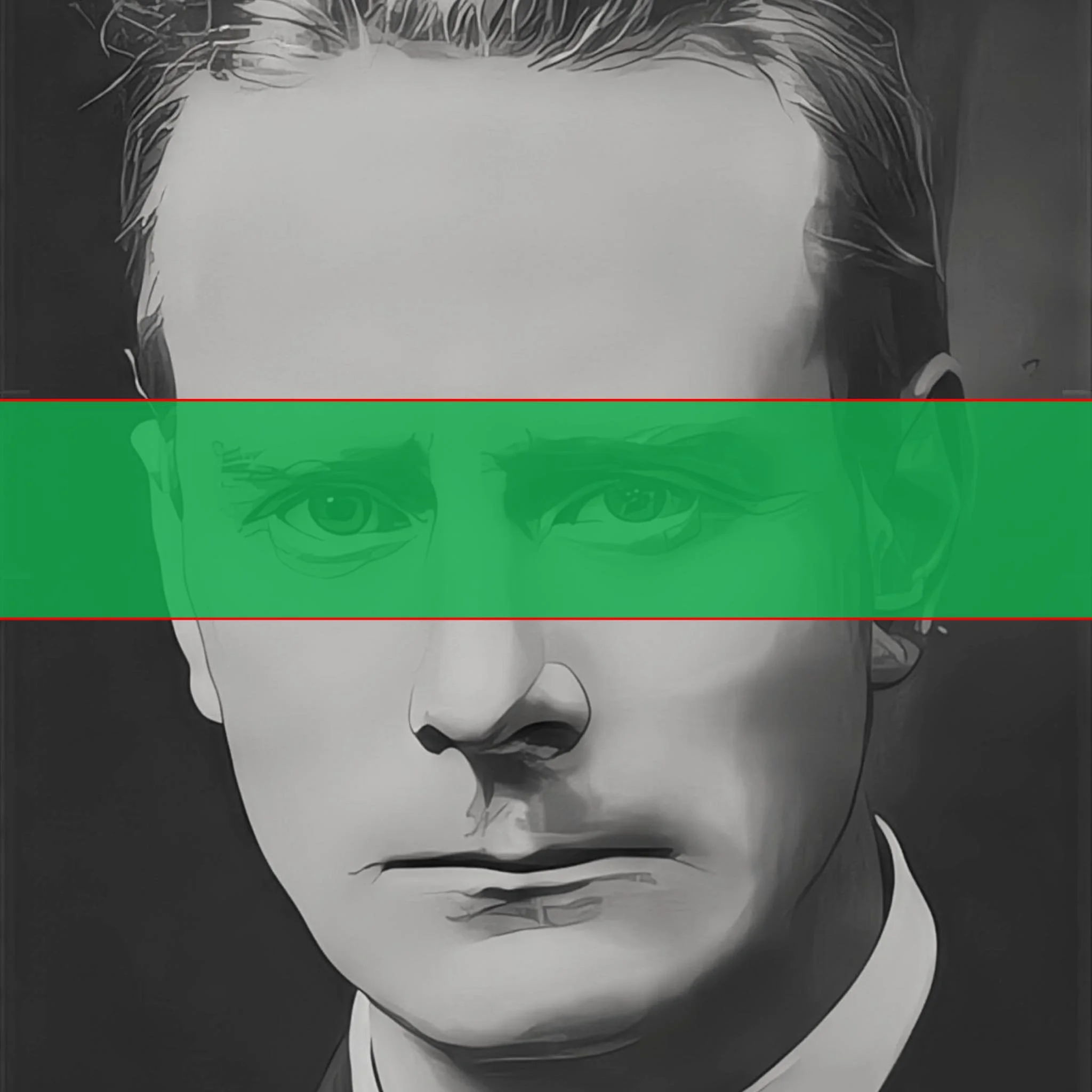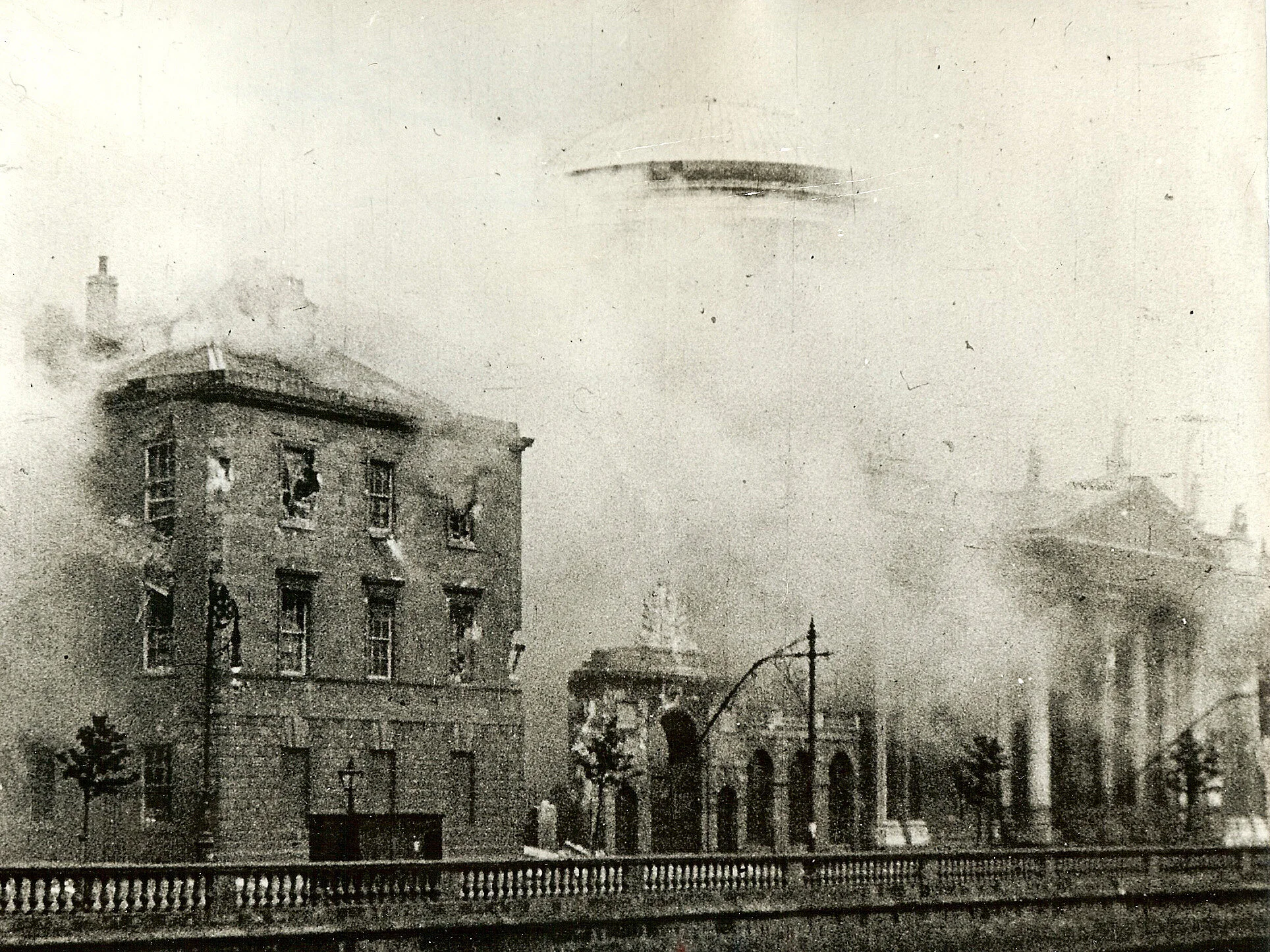On The Shoulders Of Giants . . . 'The Irish Republic Is The People's Republic' - Liam Mellows
Liam Mellows was executed along with Joe McKelvey, Richard ‘Dick’ Barrett and Rory O’Connor on 8 December 1922. Their executions were justified as a reprisal for the killing of Pro-Treaty Cork TD, Seán Hales, the previous day. But the real purpose of this war crime was to silence the voices of some of the most effective leaders on the Anti-Treaty Republican side.
Four days after the decisive 24 June 1922 General Election, Michael Collins, at the behest of Winston Churchill, ordered the Free State army to use borrowed British artillery to bombard the small IRA garrison occupying the Four Courts. After resisting three days of artillery bombardment and infantry attack, the Republicans who hadn’t managed to escape were captured.
The Four Courts in Dublin after it was shelled by borrowed by British artillery operated by Free Staters acting on the orders of the Minister for Defence, Michael Collins
In the aftermath Liam Mellows found himself detained in Mountjoy Jail. In the weeks ahead, the break from the immediate struggle outside allowed him to reflect on the events that led to the isolated and precarious situation that socialists and Republicans had found themselves in, especially with regards to the stance taken by the leadership of the Irish Labour Party in relation to achieving the goals laid out in the Proclamation and the Democratic Programme.
Instead of seeking publication of his article in ‘An Phoblacht: War News’, the IRA paper edited by Erskine Childers, Mellows published his piece in the ‘Workers’ Republic’, the paper of the Communist Party of Ireland on 22 July 1922.
As part of our On the Shoulders of Giants series we republish ‘The Irish Republic is the People’s Republic’ by Liam Mellows.
‘The Irish Republic is the People’s Republic’
By Liam Mellows
The Irish Labour Party held a large demonstration in Dublin in May to protest against ‘militarism’ – that is, against the Volunteer soldiers who were standing in defence of the Republic against British Imperialism and its dupes in Ireland.
The Irish Labour Party did not define its attitude to British militarism when the ‘Treaty’ was forced down the throats of weak-kneed Republican deputies under the threat of ‘immediate and terrible war’. The ‘Treaty’ was accepted by these deputies and their followers ‘under duress’.
The Irish Labour Party, swallowing all its pretentions to be a revolutionist body out for a ‘Workers’ Republic’, has also accepted the ‘Treaty’ and is now working cheek-by-jowl with the imperialist and capitalist groups in Ireland through the Free State so-called Parliament in an attempt to crush the Irish Republic in blood. And the means at their disposal for this militarism have been given them by the British Government.
The Irish Labour Party talked glibly of a Worker’s Republic. It still pretends to have as its objective the establishment of such a state. Veiled threats of a big stick it intends to wield someday are thrown out for the credulous. Professing to be against militarism, its leaders try to delude the movement into believing that at some future date they will head a revolution.
Labour played a tremendous part in the establishment and maintenance of the Republic. Its leaders had it in their power to fashion that Republic as they wished – to make it a ‘Workers and Peasants Republic’. By their acceptance of the Treaty and all that it connotes – recognition of the British Monarchy, British Privy Council and British Imperialism, Partition of the Country and subservience to British Capitalism – they have betrayed not alone the Irish Republic but the labour movement in Ireland and the cause of the workers and peasants throughout the world.
It is a fallacy to believe that a Republic of any kind can be won through the shackled Free State. You can’t make a silk purse out of a sow’s ear. The Free State is British created, British controlled and serves British Imperialist interests. It is the buffer erected between British Capitalism and the Irish Republic. A Worker’s Republic can be erected only on its ruins.
The existing Irish Republic can be made the Workers’ and Peasants Republic if the labour movement is true to the ideals of James Connolly and true to itself. The Irish Republic represents Independence and the struggle has a threefold significance. It is political, it is intellectual, it is economic.
It is political in the sense that it means complete separation from England and the British Empire. It is intellectual in as much as it represents the cultural expression of the Gaelic mind and Gaelic civilisation and the removal of the impress of English speech and English thought upon the Irish character. It is economic because the wresting of Ireland from the grip of English capitalism can leave no thinking Irishman with the desire to build up and perpetuate in this country an economic system that had its roots in foreign domination.
Ireland does not want a change of master. It would be folly to destroy English tyranny in order to erect a domestic tyranny that would need another revolution to free the people. The Irish Republic stands therefore for the ownership of Ireland by the people of Ireland. It means that the means and processes of production must not be used for the profit or aggrandisement of any group or class.
Ireland has not yet become industrialised. It never will if, in rejecting and casting off British Imperialism (and its offspring the Free State and Northern Parliament) the Irish workers insist that a native imperialism does not replace it.
If the Irish people do not control Irish industries, transport, money, and the soil of the country, then foreign or domestic capitalists will. And whoever controls the wealth of a country and the processes by which wealth is attained, controls also its government. Ireland, if her industries and banks were controlled by foreign capitalists, would be at the mercy of every breeze that ruffled the surface of the world’s money markets.
If native capitalism flourished a social war such as now threatens practically every country in Europe would ensue. Ireland therefore must start with a clean slate. The Irish Republic is the People’s Republic.


